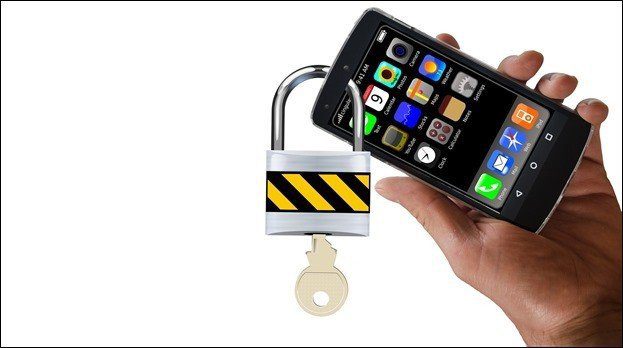If you’re the adventurous kind who likes to install custom ROMs that enhance functionality or just run stock ROM with Xposed Mods, you’ll need to be rooted. The good thing is that the process is not nearly as complicated as some other non-Nexus phones out there, and you should believe me because I’ve rooted a couple of my own and my friend’s Android phones. If you’re new to the concept of rooting altogether, you should first read up on it. Rooting will void your warranty, but if something goes wrong, there is a way to lock the bootloader and restore the phone to factory settings, restoring your warranty in the process. Like many other Android smartphones out there, rooting Moto G is a three step process. Depending on your skill set, it can take a couple of minutes to an hour. Note: Guiding Tech does not take any responsibility for a broken/bricked device. Follow the process at your own risk. If you don’t feel confident enough, ask questions on the XDA Forum or in the comments below. Or ask your techie friend to help you out.
Getting Things Ready
What you’ll need:
A Windows PC with internet connectionMoto G (at least 70% charged)A USB to MicroUSB cable
Downloads for computer: Motorola’s Device Drivers Android ADB and Fastboot (alternative) Recovery: CWM non-touch, CWM touch, TWRP (only one is needed, more on this in step 2) Superuser.zip file (for root access): Download and copy to Moto G after step 1 is complete.
1. Unlock The Bootloader
Note: Unlocking the bootloader will wipe everything that’s on your device. Apps, files, settings, everything. So before moving forward, take a backup of everything that’s important. Motorola has made the unlocking process very easy for you. Once you’ve installed the drivers and unzipped ADB, pick up your phone and turn it off. Now, hold the Volume Down + Power button combo for a couple of seconds and release. On releasing, you’ll get the fastboot screen. After you get this screen, connect your phone to PC via USB. Go to folder where you unzipped the ADB and Fastboot tools. In the folder called ADB tools, hold the shift key and right-click. Choose Command Prompt open here from the menu. In the command prompt, enter the following command: fastboot oem get_unlock_data This will generate five lines of numbers that look something like this: fastboot oem getunlockdata (bootloader) 3A45990485803606#54413933343030(bootloader) 4B465400585431303333000000#65E2(bootloader) FA0B4EDB4D26DC5E28505F2D318AA0B(bootloader) B1DF3#EE01C8020F000000000000000(bootloader) 0000000 Right-click in the command prompt and click Select or Select All. Do a right-click, click Copy and then open Notepad and paste (Ctrl+V) all the stuff there. Now, delete everything other than the numbers in the five line. And then delete the spaces between them as well. So all the numbers need to be in one line. Now, register an account on Motorola’s website. Then go to Motorola’s online unlocking tool (don’t close the command prompt yet) and in the text box, enter the numbers without any spaces in-between them. Click the Can my device be unlocked button. The website will verify and you’ll see a button called Request Unlock Key popup at the bottom. Agree to the terms and click the button. The unlock code will be mailed to you. Copy the 20 digit unlock code you got in mail, go back to the command prompt and enter the following: fastboot oem unlock [insert the 20 digit code from the mail here] Press enter and in a couple of seconds you should see Unlock completed! and the phone will restart. Don’t shut that command prompt just yet.
2. Install Custom Recovery
Now that the bootloader is unlocked, the lengthy part of the process is over. Next step is to install a custom recovery. After you’ve reset your phone and logged in to the Google account, turn off the phone and again go to the fastboot screen by using the Volume Down + Power button combo. And connect your phone back with the PC. Now, you can install three different kinds of custom recoveries here. You have the option to install a non-touch or touch enabled version of CMW (ClockworkMod Recovery) or the touch version of TWRP (Team Win Recovery Project). The process of installing each is the same. I went with TWRP because I’ve used it in past and it is easier to use on the touch screen. After downloading the recovery file, rename it to recovery with the extension of .img. Copy the file to the adb tools folder. Go back to the command prompt and enter: fastboot flash recovery recovery.img The custom recovery has now been flashed. In my case, TWPR booted up in a couple of seconds on the phone.
3. Installing Superuser (Rooting)
If you copied the linked superuser.zip file to the root directory after the unlocking was down, you don’t need to exit TWRP right now. If you didn’t, boot out of the recovery by using the Reboot option. Connect your phone to the PC and copy the superuser.zip file. Boot into the bootloader with Volume Up + Power combo. Use the Volume Down button to navigate to Recovery option and use the Volume Up button to select it. In CWM go to Install zip from SD card -> choose the Superuser.zip file -> restart. In TWRP go to Install -> select Superuser.zip -> restart. That’s it. Your phone is now rooted. If you find a Superuser or Super SU app on your phone, it means you are successfully rooted. Or try running an app like Titanium Backup. The above article may contain affiliate links which help support Guiding Tech. However, it does not affect our editorial integrity. The content remains unbiased and authentic.
















